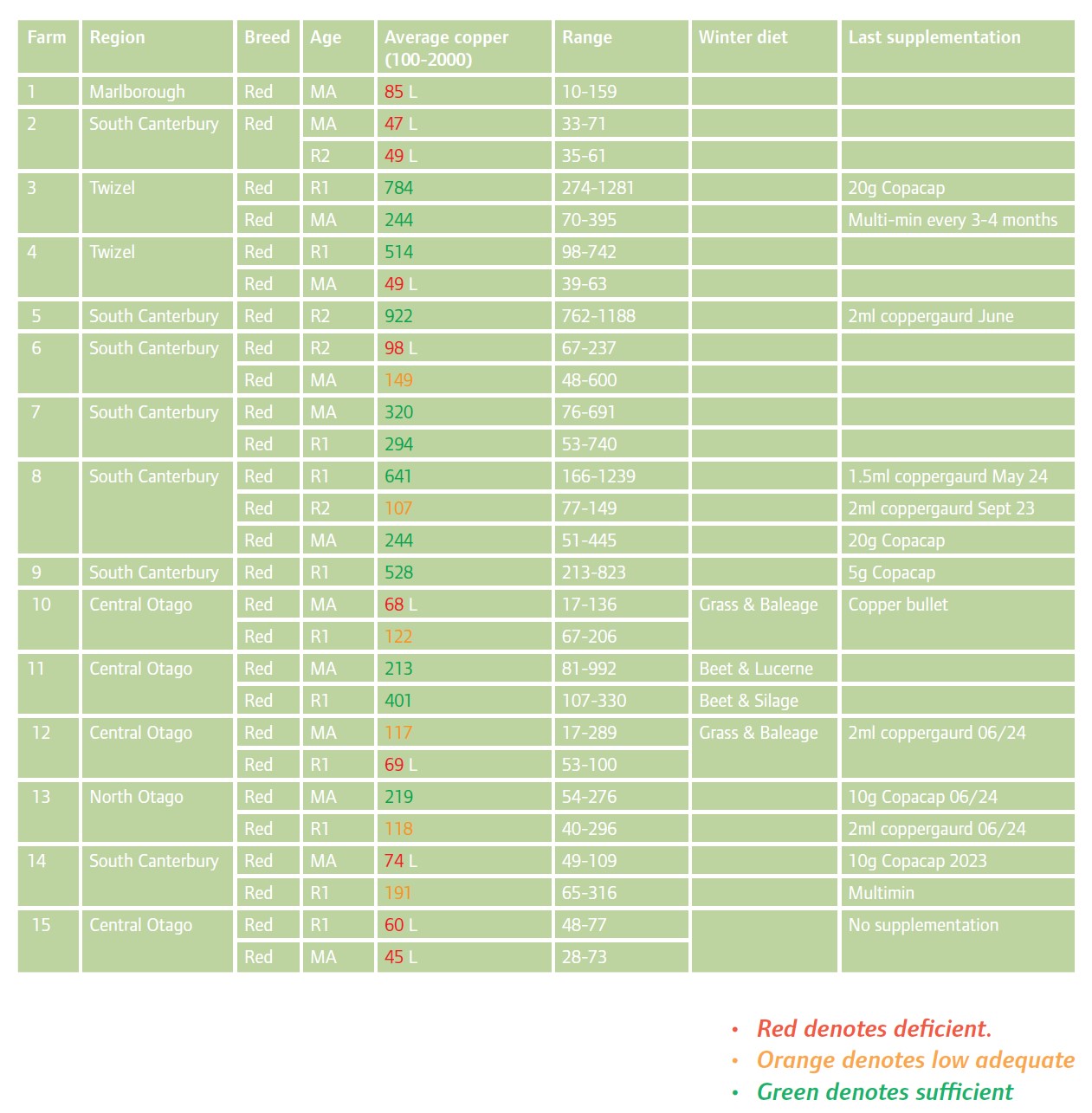Vetlife is currently undertaking a deer copper survey amongst our clients, via liver biopsies on farms, to gain an understanding of how well their deer are emerging from winter. The preliminary results are interesting with a wide range of results being reported.
36% of groups tested (ten) are in the deficient range (less than 100 μmol Cu/kg) with another 20% (six) sitting at low adequate (less than 200μmol/kg Cu). While the information on last supplementation is incomplete amongst farms, it does appear to suggest that there may be scope for increased supplementation of animals.
The testing has been timely as these deficient mobs may require supplementation before fawning occurs. Superficially, little difference appears between the effectiveness of either copper injection or bullets, although we are well aware that the safety margin of treating with bullets is higher than injection. Injection in hinds is possibly more popular due to ease of administration.
Averages are of course misleading, because while some of the group averages are adequate, the majority of animals in a group may have been deficient, but there may have been one or two animals with higher liver coppers lifting the average up. It is important for context to look at all animals in a group, not just the averages, when deciding whether to supplement or not.
One wonders if as many groups would be deficient if monitoring was carried out prior to winter rather than towards the end of winter? However, despite perceived difficulties in monitoring liver copper in deer, the process is clearly doable and a process that perhaps should be carried out more regularly.